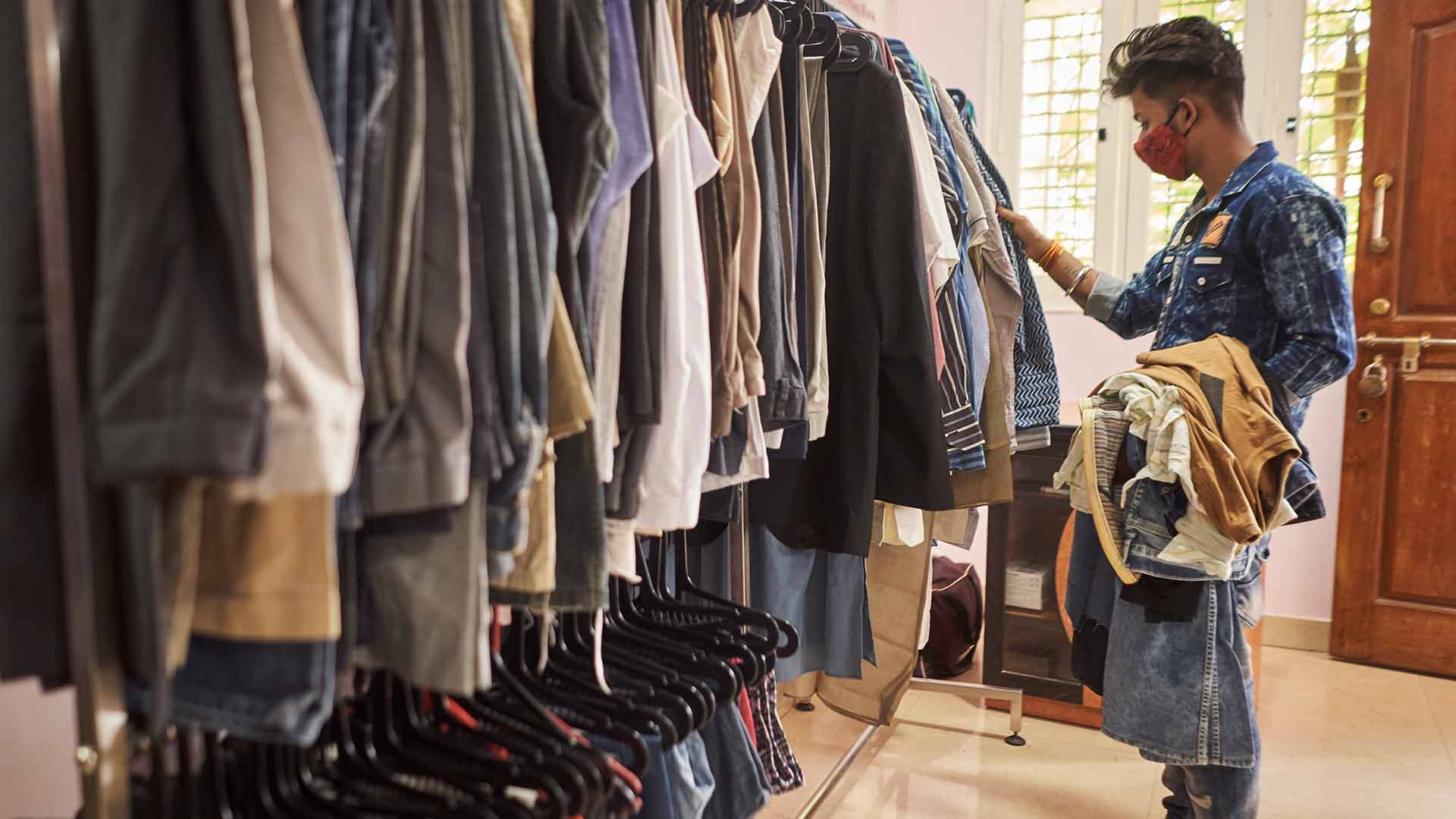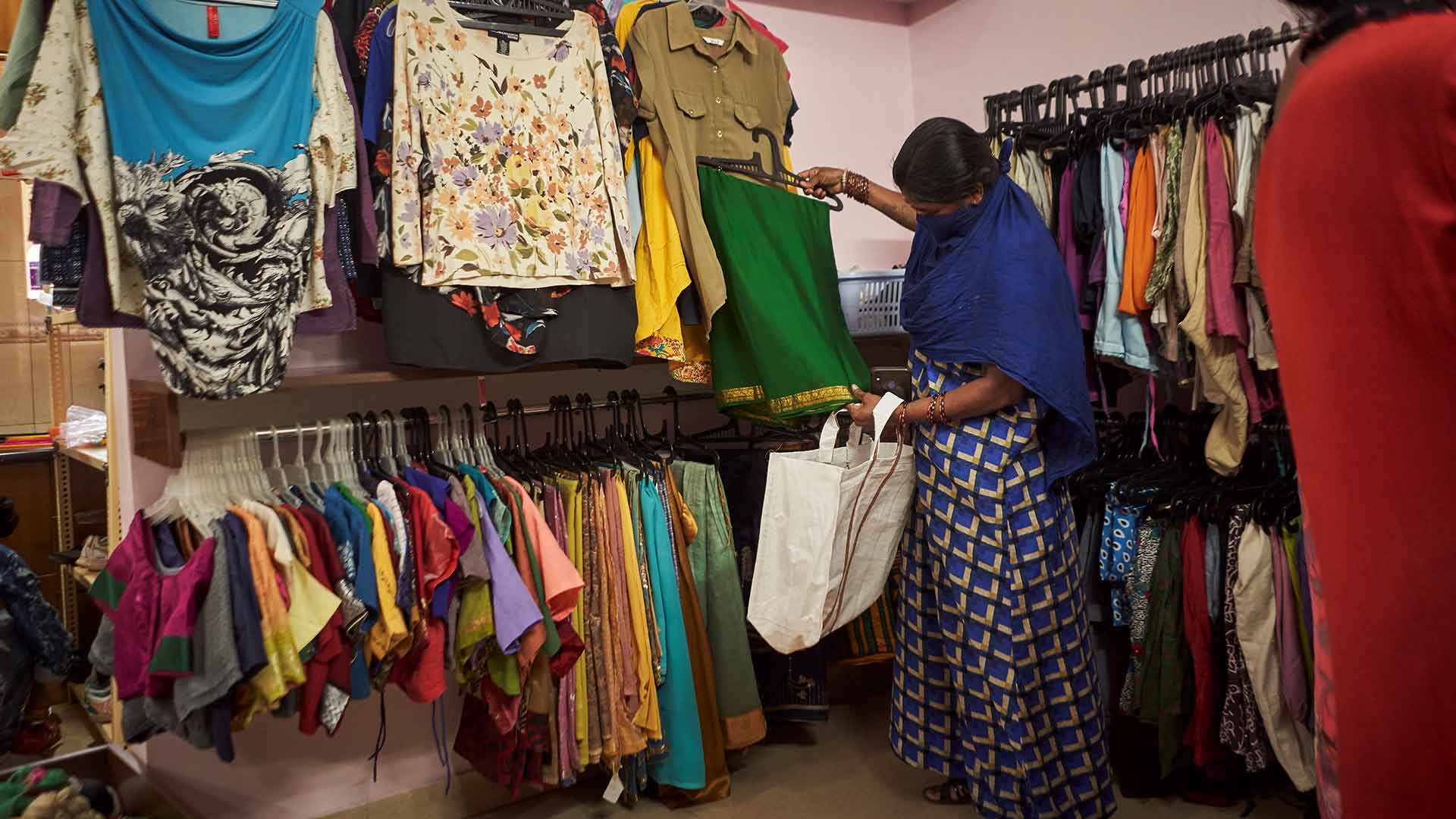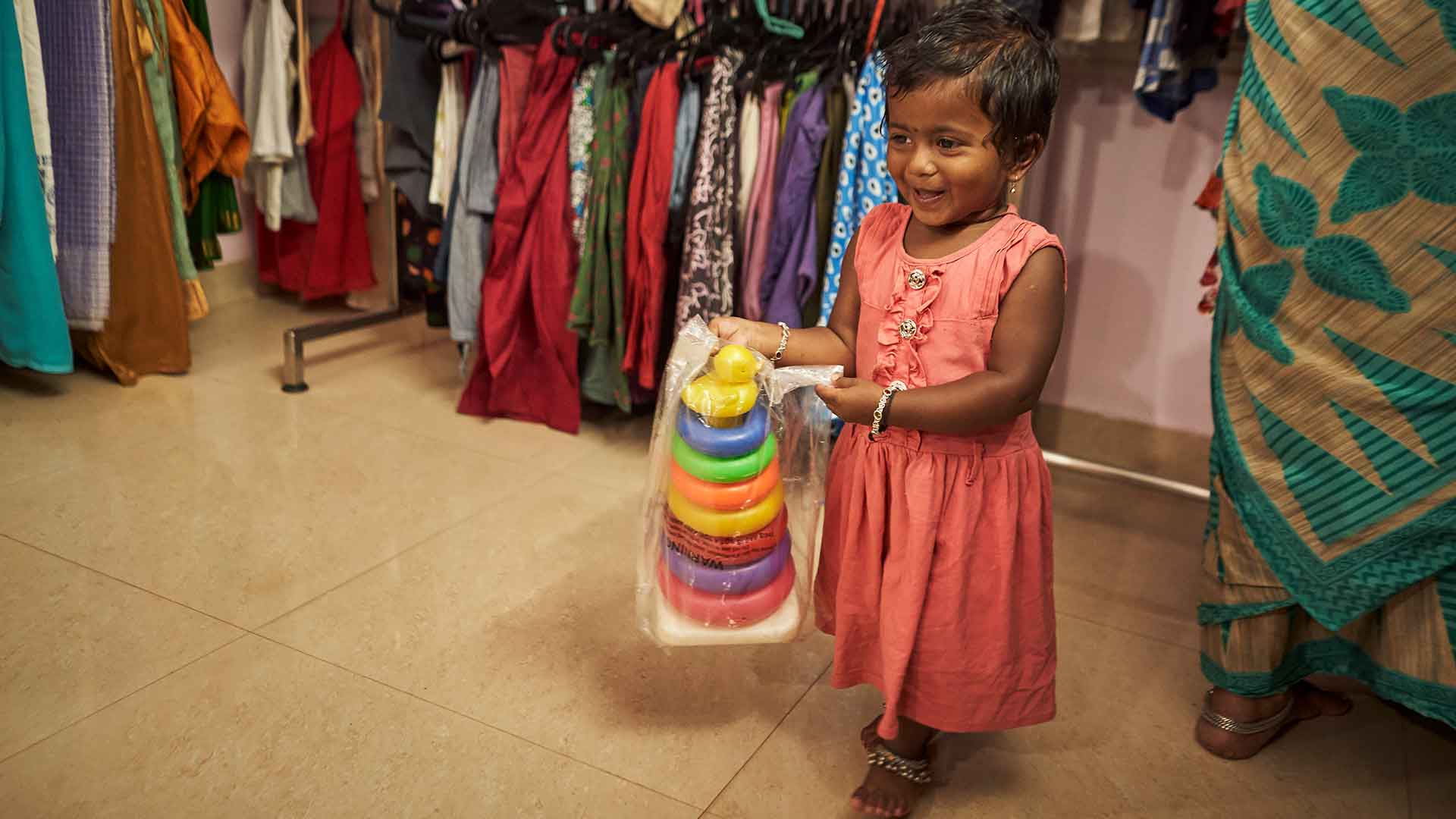
Imagining a future of giving - one rupee at a time
Rs. 10 is all one needs to buy 10 pieces of clothing - That is one rupee per item. This is something a group of friends came together to set up - a retail store for the ones that need it. This in turn is helping create a more giving society.
Every Sunday one can see a trickling of people, young and old, who gather in front of a yellow single storeyed building. There are usually young parents with their children, young couples, individuals, friends, and even grandparents. All come walking from close by or travel far to come here.
There is visible excitement in the air in this one lane in Bangalore’s Electronic City.
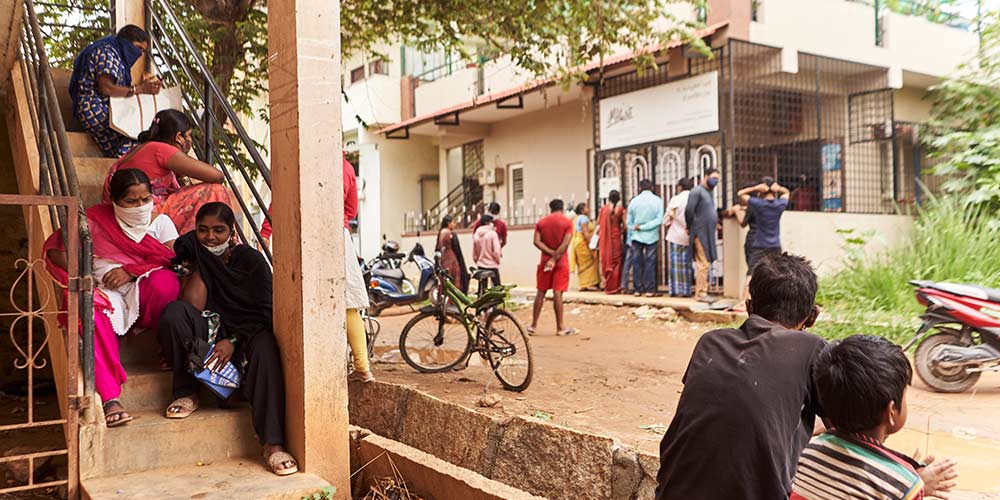
Image: Shoppers waiting outside Imagine Clothes BankWhat’s happening inside the building is also quite interesting. Another small group of people are rushing around - putting up toys and arranging hangers and boxes – with one thing on their faces, a purpose.
At 11:00 am, the door is opened. Tokens are given out, and one by one the people outside start coming in.
They have just entered Imagine Clothes Bank, a retail store for the people who need it.
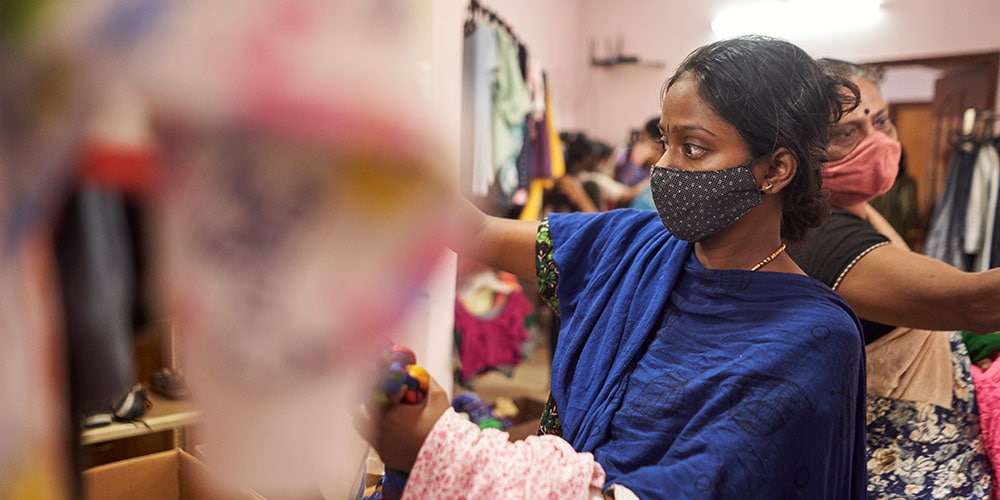
Image: Shopper at Imagine Clothes Bank(John Lennon) spoke about a world where all can live as one. Where there were no boundaries. Where people help each other.Vinod Prem Lobo
A song by John Lennon - Imagine - inspired Vinod and his friend, Nitin Kumar, to think about how they could give back to society.
"He spoke about a world where all can live as one. Where there were no boundaries. Where people help each other," says Vinod Prem Lobo, who along with his college friends in Mangalore, started a clothes bank in 2001, which ran for two years.
Cut to 2021, when the pandemic was ravaging throughout the world, the friends’ desire to give back, coupled with their experience as students, took the form of an initiative that had giving back to the society at the center of their activities.
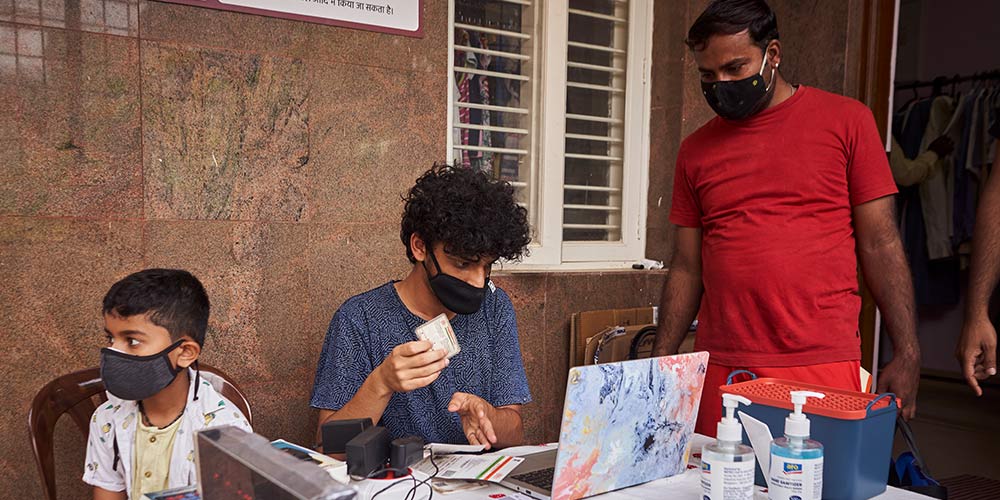
Image: Volunteer at Imagine Clothes BankThus, was born Imagine Clothes Bank on September 12, a retail store for the people who need clothing, but cannot spend a lot of money.
“There was a whole section which was struggling. That’s when we all met again, and said, ‘Look, can we do something for them because we are strong, and it is our duty to help the weak?’,” says Lobo.
The model that the clothes bank runs on depends on two things – people who need help, and the ones that can help. The latter are people who have things in excess and can share it with people who need it. Vinod and his friends set out in the hunt of those people. These are all full-time working professionals, who take time out beyond their working hours to spend their energy towards giving back to the society.
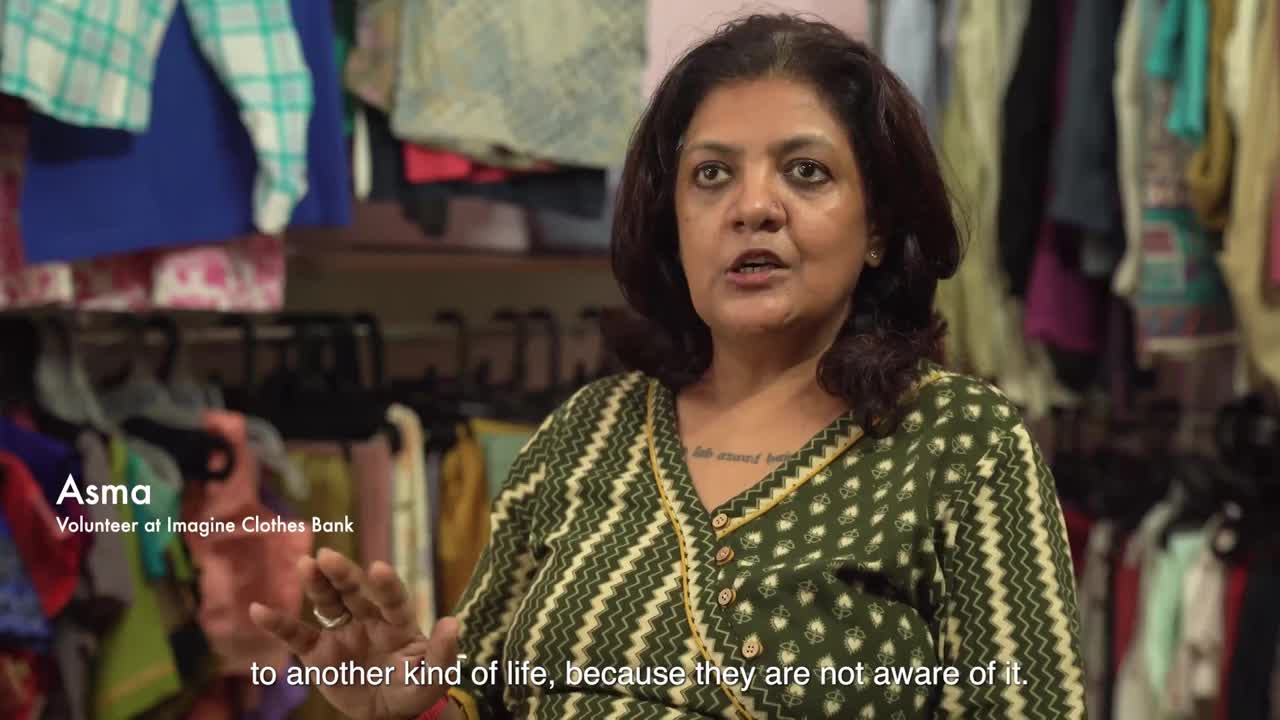
The ones that need help could be someone from a low-income family with a single earning member and could be in the need of clothes, shoes, school bags, or even support for their children’s education. This being just one example, the team has had an opportunity to meet people who are in difficult situations.
A family, on an average, spends anything around Rs. 3000-3500 only on clothing... post-Covid when we see that families are struggling, a small respite over here is the clothes bankVinod Prem Lobo
As the team worked on bringing the ecosystem together, they started to realize a strong differentiation between “donate” and “discard,” which they started emphasizing among the donor community.
“Give clothes that are worthy of a second use,” urges Melisha Noronha, who is an integral part of the clothes bank.
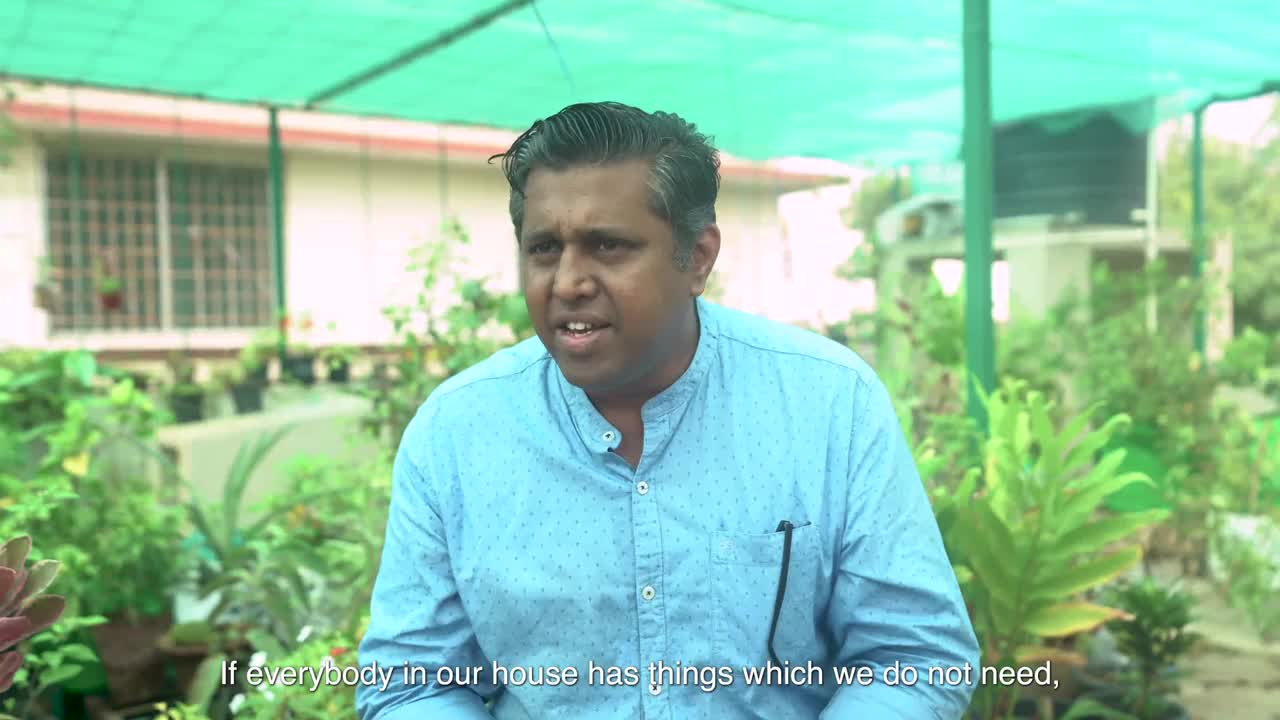
The shoppers, on the other hand, are expected to pay Rs. 10 for 10 pieces of clothing every time they come into the store. The team is also trying to build the spirit of giving among the shoppers by requesting them to give in any amount they deem fit. The proceeds of this collection go towards the education of children who need financial support.
The shoppers are increasingly realizing this that they have the power to give back to the society as well. Amounts ranging from Rs.10 to Rs. 500 make it to the collection box.
The clothes bank has so far collected around Rs. 90,000, which is being used to educate 16 children.
With growing support from the donor and volunteer community, the team has been able to serve more than 4000 families with one idea at the core of why it operates – giving and receiving with dignity.



